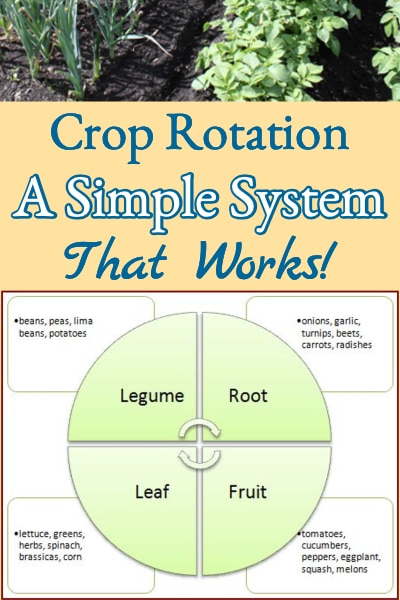
Unfortunately, while it’s even more critical for small farms and gardens where space is at a premium, rotation systems often aren’t utilized because they’re considered too difficult to follow.
But it doesn’t have to be that way; there is a simple method for rotating crops.
Quick Navigation
- What Is Garden Crop Rotation
- Why Rotate Garden Crops
- How Crop Rotation Improves Gardens
- What Happens If You Don’t Rotate Crops
- Simple Garden Crop Rotation Plan
- Leaf Group Plants (Need Nitrogen)
- Fruit Group Plants (Need Phosphorus)
- Root Group Plants (Need Potassium)
- Legume Group Plants (Produce Nitrogen)
- Implementing The System
- Space Saving Strategies
- Adding Amendments
- Garden Crop Rotation Results
What Is Garden Crop Rotation
Crop rotation is the practice of dividing the garden into sections and planting a different plant group in each section every year. But, the systems for planning crop rotations can be complex and hard to remember.
For example, in The New Organic Grower, Eliot Coleman describes both eight and ten-year rotations. These are terrific for larger gardens but seem overly complicated for my small garden plot.
So instead, I’ve been using a simple rotation system, and prefer it because it’s easy for me to remember. I’d quit when I tried to use complex systems because I couldn’t easily figure out where things should be planted. At least, not without consulting a book or a long list of rules. And that was a shame because the benefits of rotating crops are so numerous.
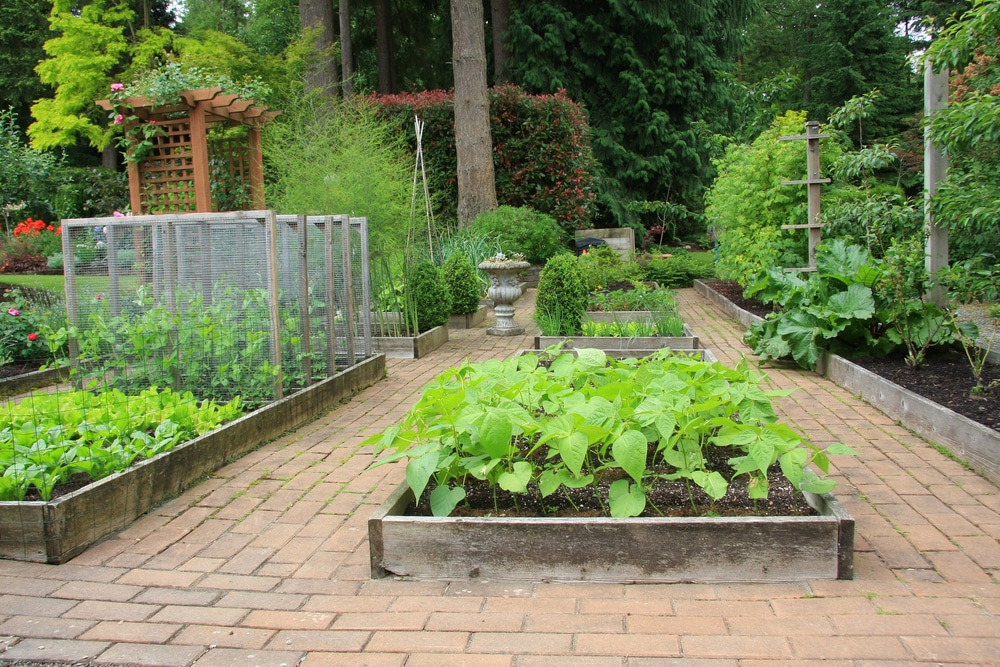
Crop Rotation Produces Beautiful & Productive Gardens
Why Rotate Garden Crops
Crop rotation reduces insect pests, diseases, and weeds while also improving soil fertility and the availability of nutrients to plants. It allows gardeners to keep beds in continuous production and minimizes the need for artificial fertilizers and amendments.
Who doesn’t want fewer insects, diseases, and weeds along with lusher gardens and plants? Especially when trying to maximize production in smaller spaces.
How Crop Rotation Improves Gardens
Pests and diseases are minimized because when the insects and diseases that affected the plants grown in a particular plot the previous year wake up in spring; those plants have been replaced with new crops that are not bothered by the same pests or diseases.
For example, when the tomato-loving bugs and diseases wake up in last year’s tomato bed, those tomatoes aren’t there. Instead, perhaps they’ll find onions, and die trying to find their way back to those tasty tomatoes.
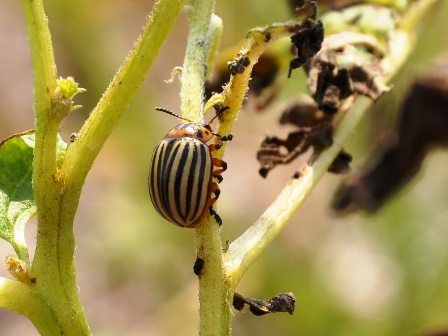
Rotating Crops Reduces Pest Infestations
In plots that are repeatedly used to grow the same plants, disease organisms and pests build up over time. This results in eventual crop failure. Rotating crops controls the disease organisms and pests.
Rotating affects weeds similarly. The method used to weed a plant usually allows certain weeds to find favorable spots. But, by planting a different type of crop each year, those weeds can’t become established. Also, some crops (like winter squash and sweet potatoes) can “clean” a bed by simply smothering weeds.
This crop rotation method improves plant nutrition by making sure that plants with similar nutritional needs are grouped together; and then rotating them based on the availability of nutrients in the soil. This prevents nutrient depletion and allows you to target soil amendments in a systematic way for maximum benefit.
Soil fertility is also improved because different plants send roots to different depths. Deeper rooted plants open up the soil structure and make more nutrients available for shallow-rooted crops as they are rotated through.
What Happens If You Don’t Rotate Crops
Trials in the US, Canada, and Europe have all shown the same results. When the same plants are planted in the same beds from year to year; the production of everything from potatoes to snap beans to tomatoes declines dramatically. In many cases, yields decline by 50% when crops aren’t rotated, mostly due to soil-borne diseases and pests.
In my own garden, what was once hard, compacted clay has become loose, friable loam. Gnarly root crops are a thing of the past, as are a host of pests and diseases. The lush, thriving plants that now grow do not really resemble the plants that once struggled for life. Production has improved dramatically, all because of a simple rotation system.
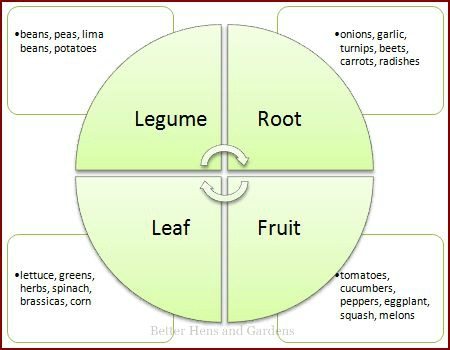
Simple Garden Crop Rotation Graphic
Simple Garden Crop Rotation Plan
The system I use is a four-year rotation that puts plants into groups based on their main nutritional needs. The groups are leaf, fruit, root, and legume. The plants in the leaf group need lots of nitrogen, those in the fruit group need phosphorus, the root group relies on potassium, and the legume group puts nitrogen back into the soil.
By grouping everything into four groups, and then rotating them every year, a simple system is created that is easy to remember. Many soil-borne diseases (such as fusarium wilt and verticillium wilt) can persist in the soil for up to three years. So, a rotation of at least four years is helpful in controlling these and many other diseases.
In this system:
- The leaf plants follow the legumes, because legumes fix nitrogen, and the leaf plants need large amounts of nitrogen.
- The fruits follow the leaf plants because too much nitrogen prevents them from setting fruit (and the leaf plants have already used most of the nitrogen) but they need phosphorus.
- The root plants follow the fruits because they need nitrogen even less than the fruits, but need potassium.
- And finally, the legumes follow the roots to put nitrogen back into the soil, and the sequence starts over again.
Because this is a simple sequence, and it makes sense to me, I can remember how it goes each year. There’s a downloadable version of the graphic below here, if you’d like to keep it for your garden file.

Simple Garden Crop Rotation Graphic
Leaf Group Plants (Need Nitrogen)
The leaf group contains all the crops that need lots of nitrogen to grow big, tasty leaves and stems. This includes things like chard, lettuce, salad greens, herbs, spinach, and brassicas (cabbage, broccoli, cauliflower, etc.).
Nitrogen is the most water-soluble of the main nutrients and therefore the hardest to keep in the soil, so it’s important that the leaf group immediately follows the “nitrogen-fixing” legumes in the rotation.
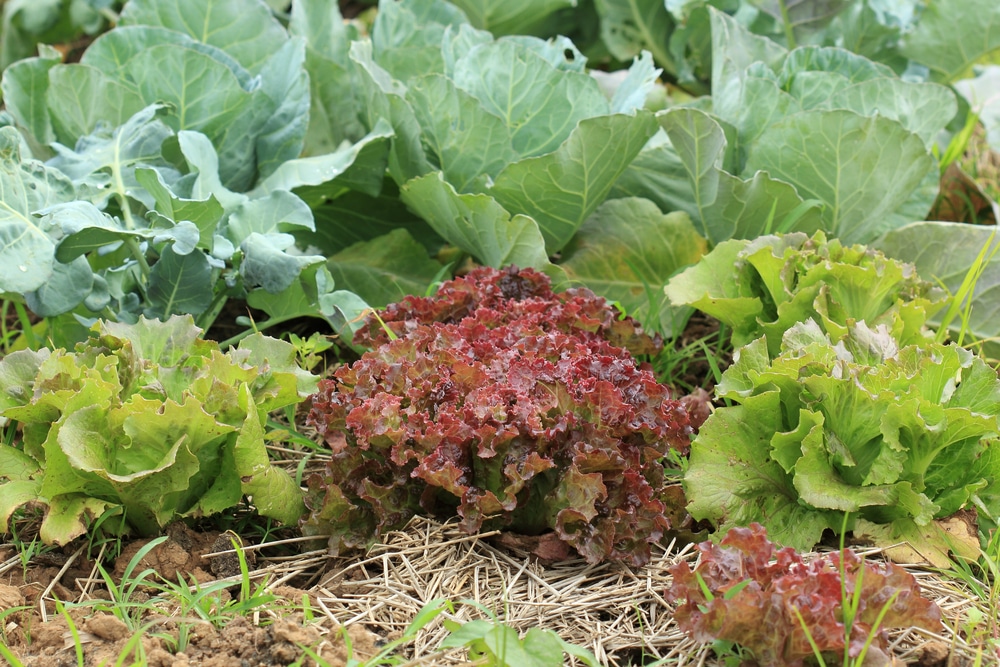
Leaf Group Vegetables (Lettuce & Cabbage)
Fruit Group Plants (Need Phosphorus)
The fruits group includes tomatoes, melons, cucumbers, peppers, eggplant, and squash. Fruiting plants are those that develop from flower pollination. They need phosphorus to set blossoms and grow fruit, but shouldn’t get too much nitrogen or they make all foliage.
Technically, corn is also a fruiting plant; however, it’s an exception that I grow with the leaf group because it needs lots of nitrogen. The fruit group tends to take up the most space, so growing corn with the leaf group helps to equalize the space needs of each group.
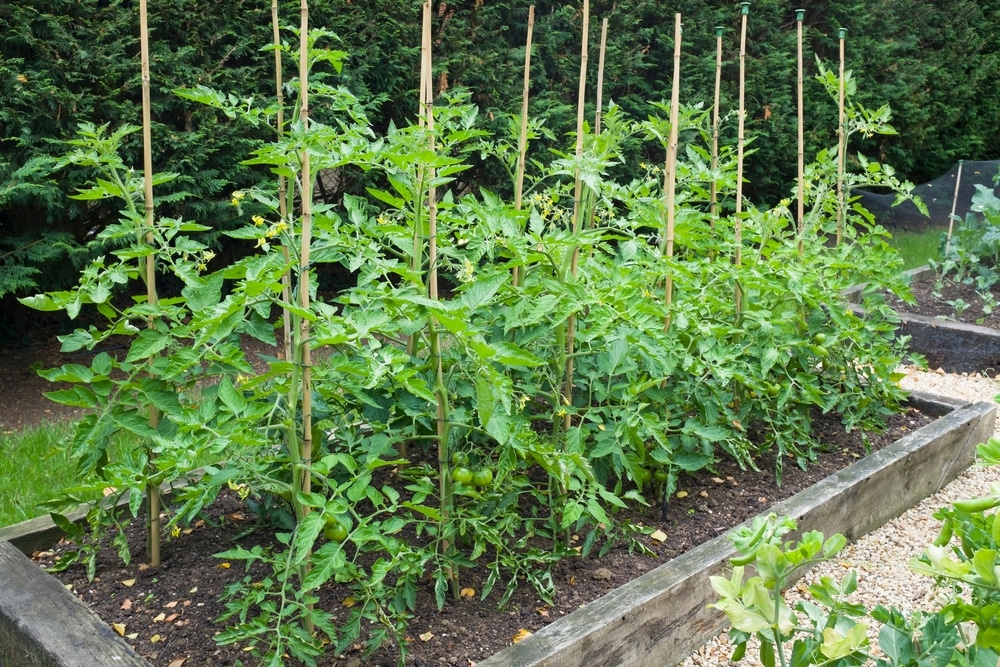
Fruit Group Vegetables (Tomatoes)
Root Group Plants (Need Potassium)
Beets, carrots, onions, turnips, radishes, garlic, and sweet potatoes are all root group plants. They need lots of potassium but little nitrogen. At this point in the rotation, there is little nitrogen left but the potassium that roots need remains.
Potatoes are a root crop too, but they are also members of the nightshade family like tomatoes, peppers, and eggplants. If I plant potatoes with the root group, this means that they follow the other nightshades in the rotation. And that means I inevitably find Colorado potato beetles infesting my potatoes. So, potatoes are another exception. I grow them with the legume group instead of the root group. This puts potatoes two years behind the rest of the nightshades and minimizes the potato beetle problem (also see Controlling Potato Beetles).
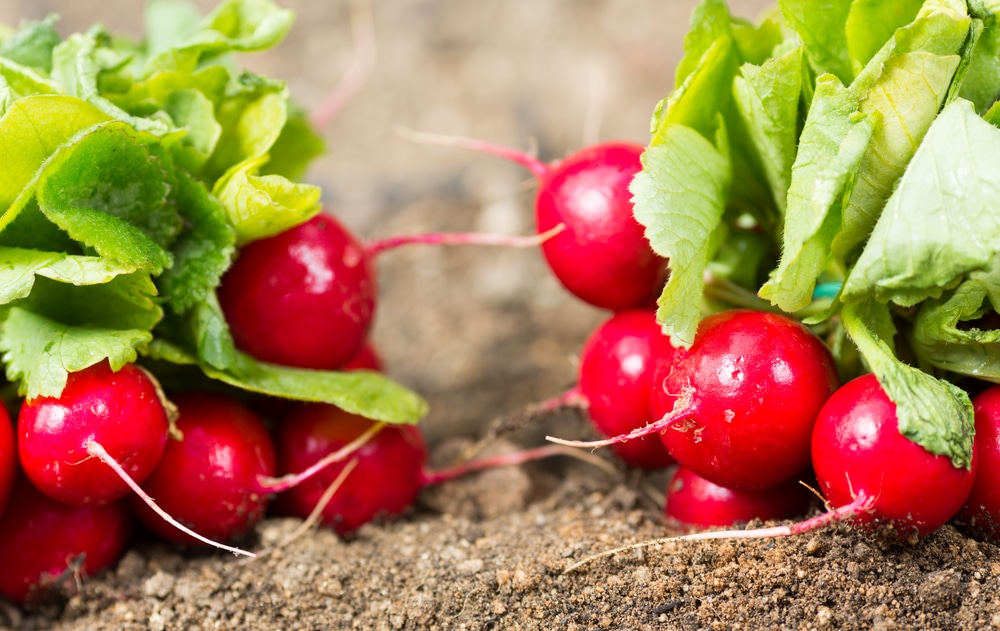
Root Group Vegetables (Radishes)
Legume Group Plants (Produce Nitrogen)
Beans, peas, peanuts, and legume cover crops add nitrogen to the soil by pulling it from the air and storing it in their roots. They are known as “nitrogen-fixing” plants because they have nodules along their roots, with specialized bacteria called “rhizobia”. These rhizobia allow them to absorb nitrogen from the air and then release it into the soil.
The legumes also appreciate open, airy soil for their nitrogen-fixing roots, so they follow the root group to benefit from the improved soil structure typically created by the roots. Also to ensure that there will be lots of nitrogen available for the leaf plants that will follow them in the next rotation.
Because of their “nitrogen-fixing” ability, it’s important to leave legume roots in the soil to decompose (don’t pull them out after they finish producing) so that the nitrogen for the next rotation cycle is available.
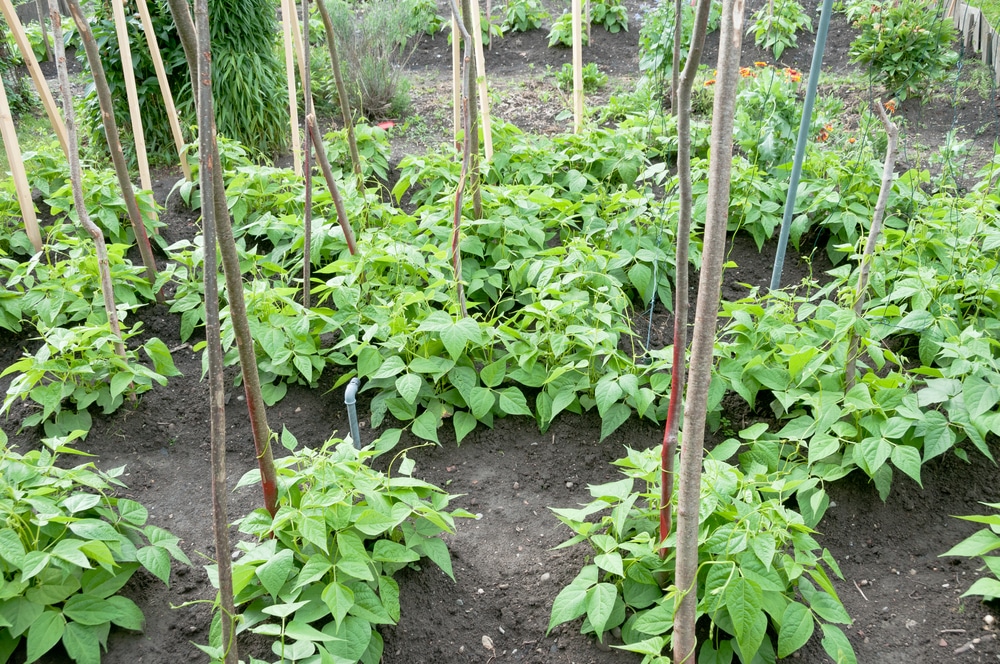
Legume Group Vegetables (Pole Beans)
Implementing The System
To get started with this rotation system, it’s a good idea to have the entire garden area soil tested in the fall of the prior year. Then amend the soil with any recommended nutrients. By amending in fall, it gives the nutrients time to break down and become available by spring planting time.
Composted manure for nitrogen, bone meal or rock phosphate for phosphorus, greensand for potassium, and lime for adjusting soil PH are good sources for the main nutrient amendments that might be needed.
In spring, divide the garden area into four equally sized sections and plant each with one of the four groups. Ideally, all four sections should be big enough to grow everything for the largest group to be grown (the fruit group for me).
That way there is always enough room as the crops rotate through. Any extra space left open by smaller groups can be planted in cover crops to improve garden fertility. Also, by allocating enough space for the largest group, you’re less likely to sneak something into the wrong plot and spoil the rotation.
Space Saving Strategies
In urban settings, finding four plots large enough to hold all the plants in the largest group can be problematic, so it’s often necessary to get creative and incorporate vertical growing strategies, intercropping, and space-saving varieties.
For example, cucumbers and peas can be grown up vertical structures, corn can be planted directly into lettuce in late spring (intercropping), space-saving varieties of melons and squash can be used, and pole beans can be grown instead of bush varieties.
To further reduce space limitations during the growing season, crops can be succession planted, just make sure that each crop stays in the proper section of the rotation.
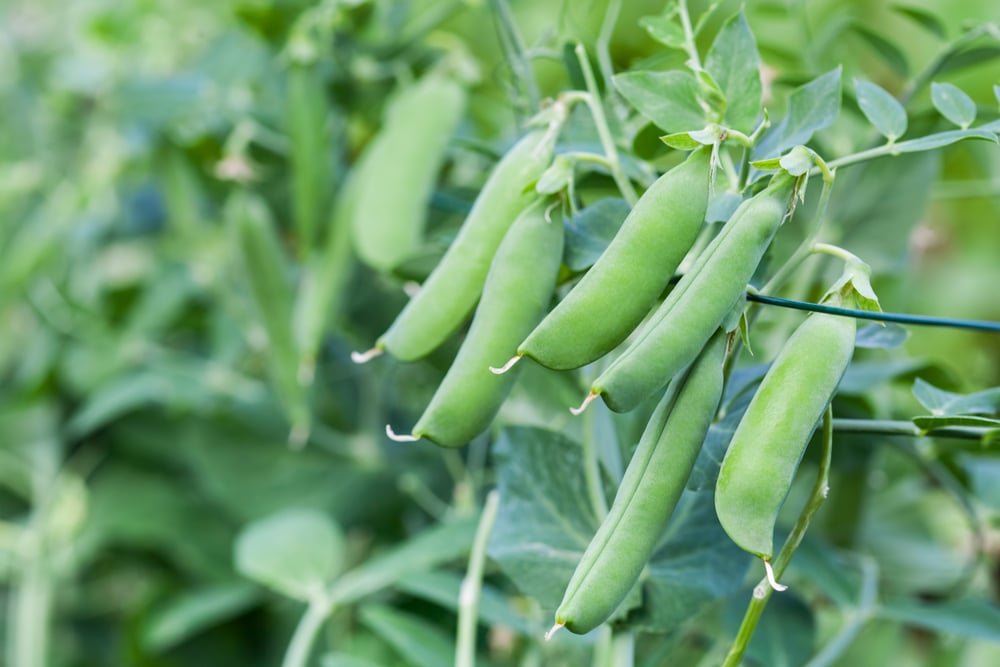
Trellised Sugar Snap Peas
Adding Amendments
Each fall, I retest the plot growing the legume group and add amendments as indicated by the soil test results. This assures that all the nutrients will be available when the rotation starts again with the leaf group. I also add composted manure to all the beds every fall to improve soil structure and fertility.
The next spring, simply rotate the groups, moving the leaf group to where the legumes grew the previous year, the fruit group to where the leaf group grew, the root group to where the fruits were, and finally the legumes to where the roots were.
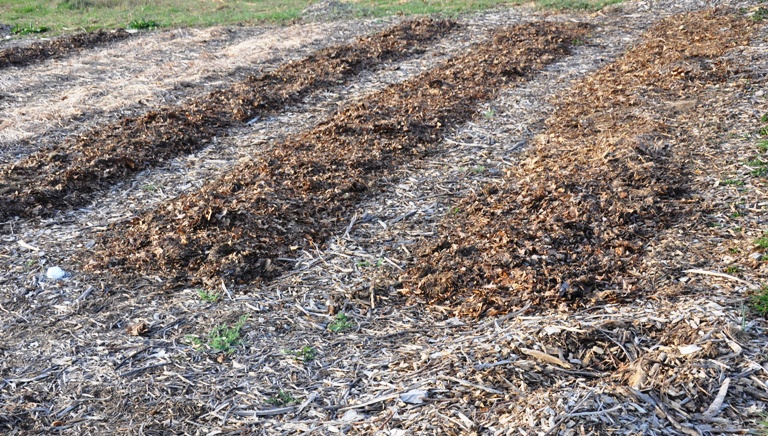
Winterized Garden Ready For Next Year’s Crops
Garden Crop Rotation Results
That’s all there is to it, each year the crops continue in the same rotation. Garden production and soil fertility improve naturally, while weeds, diseases, and pests decline. There’s no need to memorize complex rotation patterns or follow cumbersome rules.
You’ll begin to notice that previously difficult crops become easy and enjoyable to grow because they’re no longer as bothered by pests or disease, while improved soil structure and nutrients support lush growth. That’s the beauty of crop rotation; it’s truly amazing what implementation of one simple system can achieve.
It actually makes planning the vegetable garden pretty simple. And if you need inspiration on what to plant – here’s a page with lots of links to Free Garden Seed Catalogs!
John Parker says
Hello again
Darn, I just found another bit of information that said Do not plant beans after onions. That and the brassica/tomato problem is worrying me
Lesa says
Hi John, again I don’t know where you’re looking on the internet, but beans and onions have different nutritional requirements which make it a good rotation sequence. I’ve been doing it for years, and it seems to be working fine.
John Parker says
Hi again. I found a potential problem. On your crop rotation chart tomato’s will be planted where brassicas were torn out about a year prior. Is that enough time to make it ok because all I see on the internet is that tomato’s should not follow brassicas.
Lesa says
Hi John, I don’t know where you’re looking on the internet, but tomatoes and brassicas have different nutritional requirements which make it a good rotation sequence. I’ve been doing it for years, and it seems to be working fine.
John Parker says
Lesa, thank you for the above information, I really like your rotation plan. I have looked at so many others that say to follow onion and garlic with Tomatoes but that is just bad advise because (here in Sacramento Ca.) Tomatoes are planted in April but onions and garlic don’t come out until June so, that doesn’t work.
Your plan does work. I do have a question though. It is September 2022 and I am about to plant broccoli and lettuce. Looking at your chart, my tomatoes are currently in the top right corner that says “root” next year I will put them in the lower right corner that says “fruit” so right now , in September 2022, should I plant broccoli and lettuce in the lower left corner ? Because I will be harvesting them (maybe some this winter and) next year(2023) when the tomato’s are being planted and harvested in 2023 in the lower right corner.??? Please email me the answer as well so I am sure to see it.
This will help me to teach others how to rotate correctly. I recently started a company called Sacramento Vegetable Garden Specialty. I build beautiful raised redwood planters and teach people how to grow veggies.
Thank you,
John
Lesa says
Hi John,
For this system, It’s really all about the “type” of vegetable you’re planting. Broccoli and lettuce are both “leaf” type vegetables, so ideally they would follow legumes (peas, beans) in your crop rotations.
Patrick says
We haven’t been able to really focus much on crop rotation yet, but next year it will happen! So glad to have this “cheat sheet” handy! Thank you Lesa!!
Lilith says
Thank you so much for this post! It is incredibly clear and very helpful. One question: How do you balance rotating crops to different locations and the amount of sunlight each plant needs? Are all your beds in direct sun and you simply choose sun-hardy varieties? (One note: I’m from Texas, where perpetual, direct sunlight means death to plants. This might not be an issues where you garden.) Thank you!
Lesa says
Hi Lilith,
Great questions! All my beds are in full sun and I do choose varieties that need full sun. I’m afraid most of my gardening experience is in the Midwest so I can’t speak to whats needed in Texas.
Greta says
This is, by far, the most clear and concise explanation of the rotation system I have found online. Thank you! Because you explain the reasoning behind the system, it’s much easier to remember. Thanks again. I’ll be putting this into practice this spring.
Lesa says
Hi Greta, I’m so glad you found it easy to follow and remember – that’s how I feel too. I can understand it so I can remember it!!!
Melissa says
I would just like to thank you. After HOURS spent trying to nail down a rotation system (there are several different schools of thought, I’ve discovered…), and then trying to reconcile where everyone places potatoes in said systems, you are the only one who has explained the WHERE and WHY. I am truly grateful!
Lesa says
Hi Melissa,
I’m so happy that you found it useful! This is a system that’s easy for me to remember – which means I use it and my plants are happier!
Amy says
I know I’m late to the conversation but…
What if you are doing intensive planting, such as square foot gardening? If I plant peas, then a leaf, and then finish the year with a fruit, in the same soil, can I then plant peas again in the same soil the following spring?
I love peas, but have a limited amount of growing space.
Jerry says
Great post.
Lesa says
Thanks Jerry, I hope it helps your garden!
Kim says
this is a great help, BUT, how do you companion plant with this method? For instance, tomatoes love carrots and onions, but they would be located with the root crops, or do you just scatter a few around your tomatoes and grow your crop in the right rotation zone?
Lesa says
Kim, I do just scatter a few companion plants in if I feel that the crops will benefit – but maintain the main crop of each vegetable in the correct rotation zone.
Lesa says
Hi Melissa, Unfortunately Google punishes websites if it sees the exact same content in two different places, so please don’t. It’s ok to use an excerpt, a picture, and link back though.
Jessica | The 104 Homestead says
I love your explanation of this system. Often times when you are finished reading 100s of articles, you are so confused you don’t know WHAT to do. Keep it simple, like you have suggested. Thank you for sharing on Green Thumb Thursday.
christine says
Like Rick I find the diagram confusing. It seems the quadrants should read from the upper left: legumes, moving clockwise to leaf, to fruits, to roots and then back to legumes- according to the text.
The diagram as is reads (to me) as roots follow legumes, fruits follow roots, leaf plants follow fruits, and legumes follow leaf plants, which is the opposite of the text.
Great simple system, though. Thanks for posting!
Caitlin | The Siren's Tale says
Hi again! I tried again to print today from a printer at home. It looks like the error was on the printers at work. Sorry about any confusion!
Janet Garman says
I am definitely saving this info. Not only the graphic, which I printed, but the entire article is full of valuable information. Thank you. I am not a very successful gardener, so I am always looking for information that makes sense to me.
Caitlin | The Siren's Tale says
Hi there! This is great information, but I wanted to let you know about a website error I encountered. I tried (from 3 different printers) to print this article by clicking the ‘print’ button above. When the information prints, the text and images run into each other and overlap, making the information impossible to read. I tried to copy/select the article to print and it said content protected. I just wanted to let you know that your website isn’t letting readers print off articles! Thanks 🙂
Lesa says
Caitlin, thanks so much for letting me know about the website error – I’m not sure what’s happening on your end, but most people seem to be able to use the print functionality. Until I can figure out how to fix this for everyone, I added a link for you to download the graphic. It does take awhile to download, but seems to be working.
Jo Rellime says
Oh, this is easier! I love it. And I would love to be able print out this graphic and put it in my gardening journal. Don’t suppose you could email it to me? That would be awesome!
Jo Rellime says
Never mind, hon! I figured out a way to print it. It is now in my journal! VERY useful. Thanks so much!
Rick says
Shouldn’t the arrows be going in the opposite direction? The arrow direction shows Legume Root Fruit Leaf.
Lesa says
Rick, and that’s the correct sequence, the legumes follow the root, the roots follow the fruits, the fruits follow the leaf, and the leaf follows the legumes 🙂
Rick says
I’m sorry if I’m being confusing but the way you have it worded is correct, however, by the arrows on the diagram you have legume, then (arrow pointing to root) meaning that the root is next following the legumes, fruit next following the root, leaf next following the fruit, and lastly the legume coming after the leaf.
Lesa says
Rick, yes the diagram shows the legumes with the arrow pointing to the roots (meaning the legumes follow the roots), the roots point toward the fruits (meaning the roots follow the fruits), the fruits point toward the leaf (meaning they follow the leaf), and the leaf point toward the legume (meaning they follow the legume).
Lisa says
I thought I had a grip on this but then read all the comments and feel I don’t. Do you mean by “follow” that this is what you will plant in the next season in place of? For example, if I plant Legumes in bed #1 this year, I would plant Root in the bed next year, Fruit in the bed the year after that and then the final year I would plant Leaf? That is the way In am reading it. Can you clarify please? I am a second year gardener, have just built new garden beds and would really like to incorporate your system. Thank you. I look forward to your response.
Lesa says
Hi Lisa, No if you plant legumes in bed 1, next year you plant leaf, then fruits, and then roots.
Jared says
Rick, do as she says, not as she draws. 🙂
Jen says
Rick, thanks for catching this! Or I would have gardened using her saved diagram assuming it followed her article. In reading her reply, I realized she is thinking of using the arrows the opposite way of the rest of us. But thanks to your and a couple of other comments, I relooked at the diagram and switched the root & leaf sections using markup in my photos.
Ryan says
Yes, the diagram is very misleading, and you should have the arrows point to the crop you need to grow the following season.
Marie at The Homesteader School says
Lesa, this is an excellent description–clear and simple, with a helpful diagram. Rotation is so important and this takes the confusion out of it. Linking to this in our February how-to roundup!
Lesa says
Marie, thanks and rotation is so important! I’m excited to be in your how-to roundup 🙂